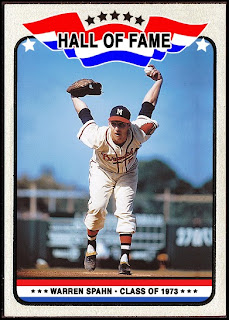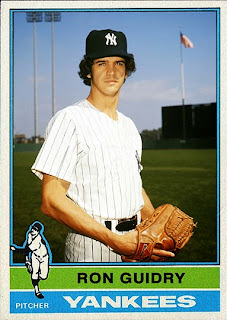Today, I post a Hall of Fame card for 19th-century pitching great Mickey Welch, one of my early baseball
obsessions:
Once I got my hands on my first Macmillan Baseball Encyclopedia as a 10 year old I became obsessed with
those early Gods of the mound, like Tim Keefe, Kid Nichols, Pud Galvin,
and this guy, fellow Brooklyn native Welch.
All of these pitchers had incredible numbers on their Major League
resume, and my eyes would strain to grasp the inning-counts, the
complete games, win totals and the earned run averages.
It was mind-blowing to me, and to some extent (even after learning the differences of the game back then), it still is.
Welch put together an uber-solid 13-year career, a career that saw
him post nine 20-win seasons, four 30-win seasons and a 40-win season.
All but three of his years as a pro were with the New York Giants,
with his first three years playing for the Troy Trojans between
1880-1882, and he went on to become only the third pitcher to amass 300
or more career wins.
He'd finish his career after only one start in 1892, putting up a
307-210 lifetime record, with a 2.71 earned run average, a staggering
525 complete games out of 549 starts, 41 shutouts and 1850 strikeouts.
Sadly, he wouldn't gain entry into the Baseball Hall of Fame until
1973, long after he passed away in 1941, when he was voted in by the
Veteran's Committee.
But this time the Committee got it right as opposed to some of those other questionable picks in the early-1970's, as Welch found his place with all the other aforementioned 19th-century 300-game winners.
But this time the Committee got it right as opposed to some of those other questionable picks in the early-1970's, as Welch found his place with all the other aforementioned 19th-century 300-game winners.



































